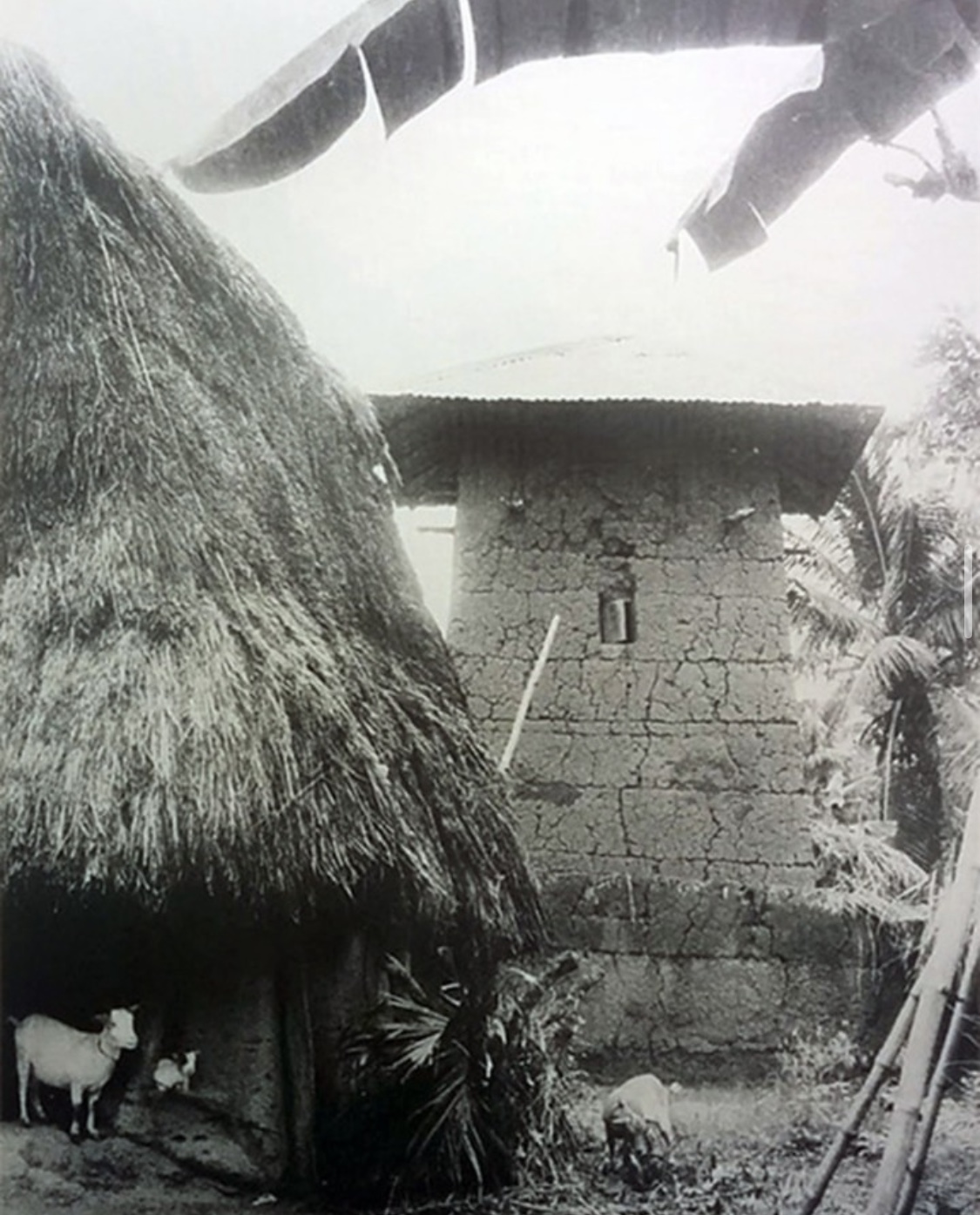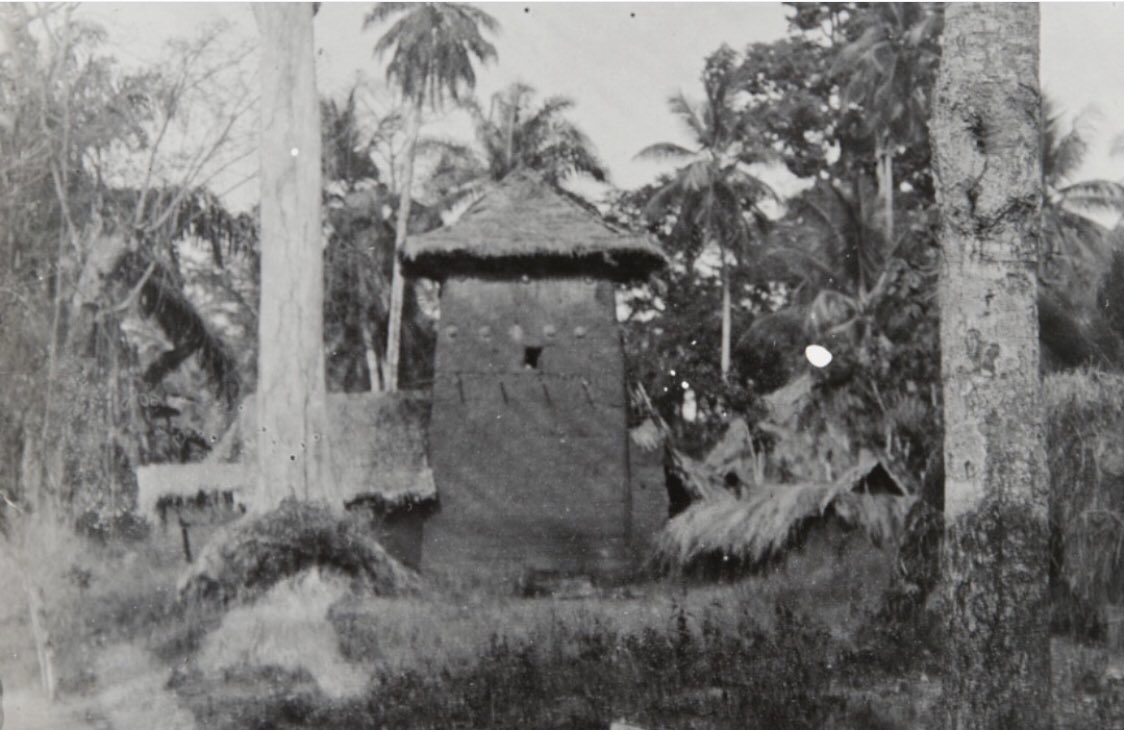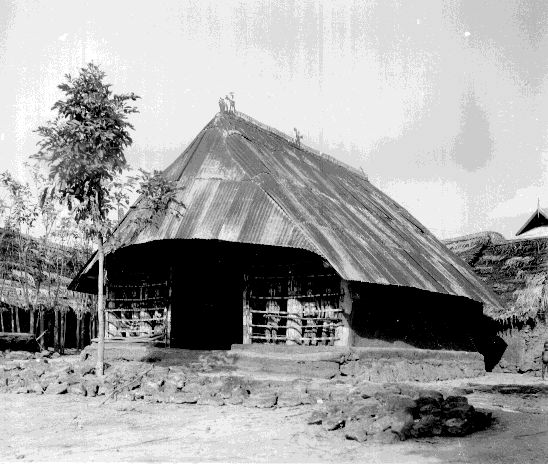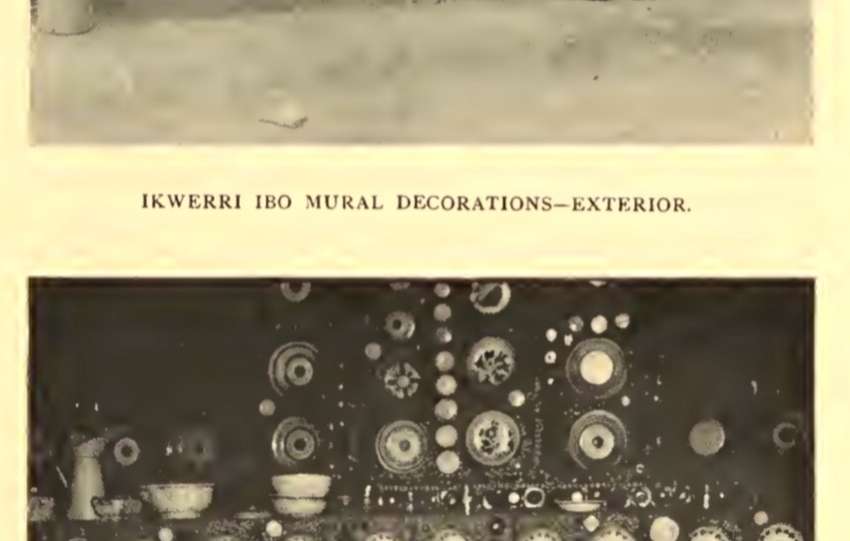
These towers became popular in Igbo compounds around today’s Anambra & Imo States due to the effects of the Atlantic slave trade which included raids in order to capture people to enslave.
The towers, also known as “war towers” and known in some areas as obuna enu or ụnọ aja, was essentially a watchtower which allowed for enemies to be sighted, some towers allowing for gun holes for defence.
The “war towers” of Igboland, such as those found in the compound of Nwankwo Irienzuo in Awka, Nibo, Nise, stand as historical markers of resilience and adaptation. These towers, built during a turbulent era, served not only as defensive structures but also as symbols of Igbo ingenuity in the face of the Atlantic slave trade. Photographed by Zbigniew Dmochowski and Northcote Thomas, these towers capture a unique architectural response to the threats faced by Igbo communities in what is now Anambra and Imo States.
Origins and Functions of War Towers:
War towers, locally known as “obuna enu” or “ụnọ aja,” emerged in the 18th and 19th centuries in response to the security challenges of the Atlantic slave trade. During this period, Igbo communities were frequently raided by external forces seeking captives for enslavement, leading to the need for fortified structures within family compounds.
1. Watchtower and Defense: The primary function of these towers was as a watchtower. Positioned within the compound, the towers provided a high vantage point for spotting potential threats from a distance. Some towers included gun holes, allowing defenders to fend off intruders or attackers, making them effective defensive structures against raids.
2.Safe House: Beyond their function as lookout points, the towers served as safe houses for the family in times of attack. When enemy forces approached, families could take refuge within the tower, shielding themselves from potential harm. This use transformed the towers into protective spaces that allowed for quick, safe retreats during unexpected raids.
3.Patriarchal Space: In times of peace, the upper floors of these towers served a domestic purpose as well. The patriarch of the compound, often the eldest male and head of the family, used the tower’s upper levels as a personal room or as a space for solitude, signifying both authority and watchfulness. The tower thus became a multipurpose space, representing both protection and patriarchal oversight.

Architectural and Cultural Significance
These war towers are significant examples of Igbo architectural responses to external pressures. Constructed from mud or locally sourced materials, they represent traditional Igbo building techniques adapted to meet the demands of a challenging historical context. The towers’ design, featuring high walls and narrow, defensible openings, demonstrates the ingenuity of Igbo craftsmanship and the strategic thinking of communities who valued both security and self-sufficiency.
Legacy of War Towers
While the Atlantic slave trade is no longer a threat, the legacy of these towers endures in the architectural history of the Igbo people. They remind us of a period when Igbo communities were forced to adapt their ways of life for survival. Today, remnants of these towers can still be found in parts of Southeastern Nigeria, where they serve as cultural landmarks and testaments to Igbo resilience and historical memory. Preserved in museums and archives, photographs of these towers by figures like Northcote Thomas and Zbigniew Dmochowski provide a valuable visual record of Igbo history and the architectural innovations that arose during a period of adversit
They were also used as safe houses for the family, and in times of peace, the upper flower of the uno aja was also used by the patriarch of the compound (walled family housing unit) as a spare room.
Reference
Dmochowski, Z. (1990). An Introduction to Nigerian Traditional Architecture: South-Eastern Nigeria. Ethnographica.
Thomas, N. (1910). Photograph of Igbo Tower. Museum of Archaeology and Anthropology, Cambridge.
Isichei, E. (1976). A History of the Igbo People. Palgrave Macmillan




